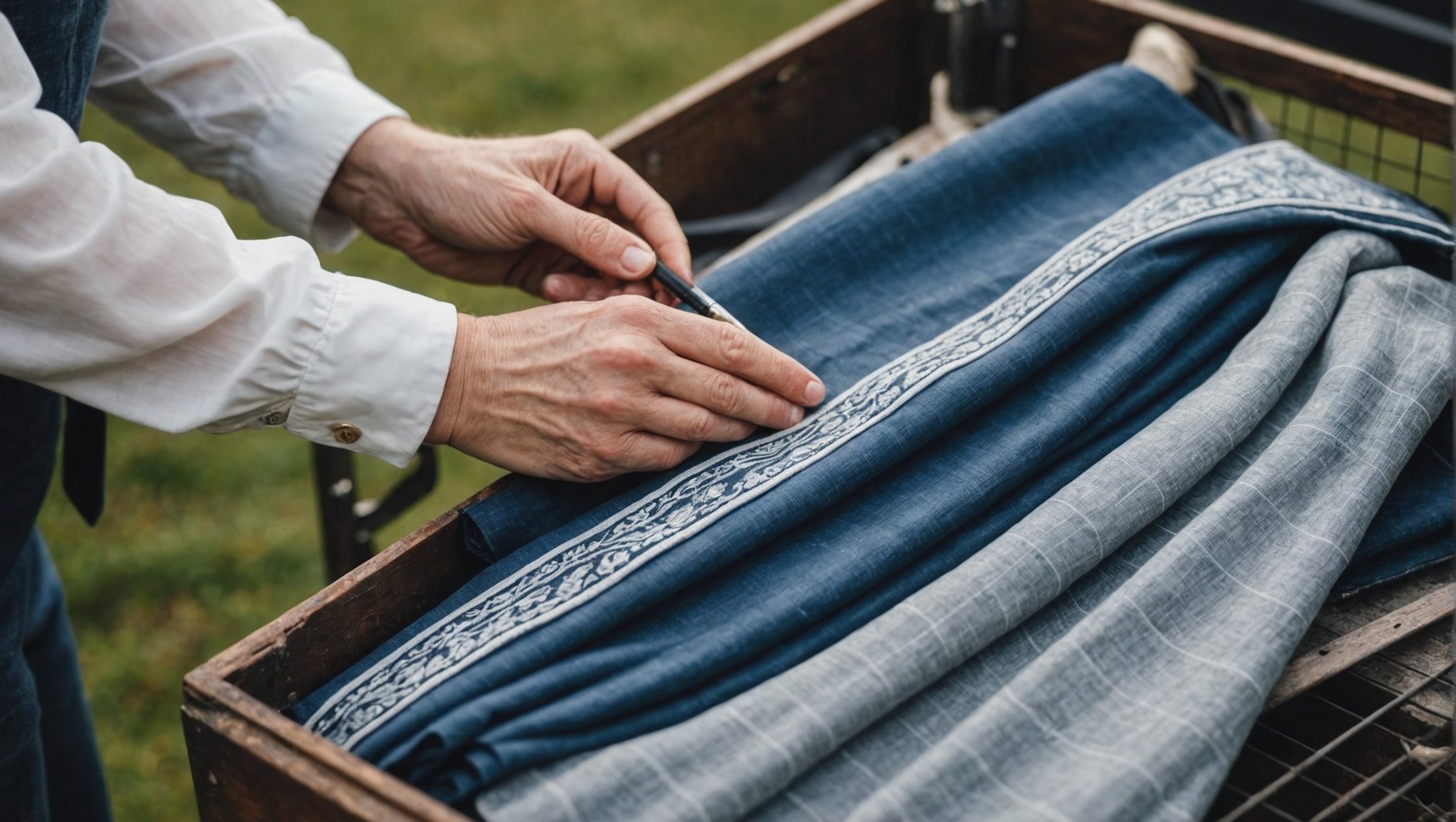In the ever-changing climate of the UK, clothing care can be a challenge. The task of maintaining the integrity and appearance of delicate fabrics can seem daunting. But it doesn’t have to be. We’re here to guide you through the best practices in fabric care, specifically suited to the UK weather. The focus will be on washing, drying, and storing while considering specific factors such as fabric type and weather conditions.
The Importance of Proper Washing
Washing your delicate fabrics correctly is more than just a matter of hygiene. It’s about prolonging the life of your treasured pieces, protecting their colour and structure. When you wash your clothes, you’re not just removing dirt and stains. You’re also dealing with body oils, sweat, and dead skin cells that can accumulate over time and damage the fabric.
Have you seen this : Discover unique steampunk goggles for every style
When washing, pay attention to the laundry labels. These provide invaluable information about the right water temperature, machine settings, and specific care instructions. Delicate fabrics such as silk, lace, and wool will often require a cold wash to preserve their fibres and prevent shrinkage or distortion.
Handwashing is often the safest bet for these items, but if that’s not possible, use a mesh laundry bag for added protection in the machine. Avoid overloading your washing machine as this can lead to twisting and pulling of your clothes. Always use a gentle, fabric-friendly detergent and consider using a fabric softener for extra care and softness.
This might interest you : How to Style an Oversized Sweater for a Cozy Yet Chic Look in the UK?
The Art of Drying
Drying your clothes is just as important as washing them, but it’s an area where many people make mistakes. The primary aim is to remove moisture without causing unwanted shrinkage, stretching or wrinkles.
When it comes to drying delicate fabrics, less is often more. High heat can cause fabrics such as wool and silk to shrink or warp. Whenever possible, air drying is the best option for these items. Lay them flat on a towel to keep their shape and rotate them occasionally to ensure even drying.
If you must use a dryer, then ensure to use the lowest heat setting or an air-only cycle. Remember, too, that some items may require reshaping while they’re still damp. Always keep an eye on the drying process to prevent any potential damage.
Temperature Considerations
The temperature at which you wash and dry your clothes can significantly affect their longevity. Hot water can cause fading, shrinkage, and damage to delicate fibres. On the other hand, cold water is gentler and can be just as effective for cleaning clothes, especially when paired with a good quality detergent.
Similarly, high drying temperatures can have a detrimental effect on your clothes. They can cause shrinkage, especially in items made of wool or other natural fibres. It can also lead to permanent creasing or warping.
Whenever possible, opt for cold water and low drying temperatures. Pay close attention to the care labels on your garments for specific guidelines.
Storage Solutions for Delicate Fabrics
Once your clothes are clean and dry, proper storage is crucial. This step can help to keep your clothes looking their best, extend their lifespan, and protect them from the elements.
When storing delicate items, make sure they’re completely dry first. Dampness can lead to mould or mildew, causing irreversible damage. Fold clothes neatly to prevent wrinkles and creases, and use acid-free tissue paper for items that may need extra protection.
Store your clothes in a cool, dry place, away from direct sunlight. Sunlight can cause colours to fade, particularly in darker fabrics.
Fabric-Specific Tips
Different fabrics require different care routines. Silk, for example, is incredibly delicate and should always be hand washed with a gentle detergent. Wool, on the other hand, should be washed cold to prevent shrinkage and should always be laid flat to dry.
Cotton is a robust material, but it can still shrink if washed or dried at high temperatures. Linen can withstand higher temperatures, but it’s prone to wrinkling and should be ironed while still damp.
Understanding the unique needs of each fabric type will ensure that your clothes stay in pristine condition for longer. As always, the care label is your best guide to understanding the specific needs of each garment.
Adapting your care routine to suit the UK’s weather conditions is essential. By paying attention to how you wash, dry, and store your clothes, you can ensure they stay looking their best for years to come. With these tips in mind, you’re well equipped to keep your delicate fabrics in excellent condition, no matter the weather.
How to Protect Fabrics in Unpredictable Weather
Given the fluctuating nature of the UK’s weather, it’s essential to consider how these changes can impact your delicate fabrics. For instance, constant exposure to rain can lead to fabric damage such as colour running or material weakening. On the other hand, excessive sunlight might cause fading.
To protect your clothes in unpredictable weather, using suitable fabric protection products is recommended. These can create a barrier on the fabric that repels water and stains, without affecting the breathability of the material. They are particularly useful for outdoor wear and can be easily applied at home.
Another tip is to carry a small umbrella or light raincoat to shield your clothing from sudden downpours. If your clothes do get wet, allow them to air dry as soon as possible. Never hang wet clothes in direct sunlight as the combination of water and excessive heat can lead to discolouration.
It’s also important to note that while dry cleaning is often recommended for delicate fabrics, frequent dry cleaning can lead to fabric degradation. Hence, consider spot cleaning or handwashing where possible and leave dry cleaning for deep-set stains or as a last resort.
Concluding Thoughts on Fabric Care and the UK Climate
To sum up, taking care of delicate fabrics in the UK weather involves more than just routine washing and drying. It requires a comprehensive understanding of fabric care labels, awareness of how different fabrics respond to various temperatures, and appropriate storage practices.
Remember, the care label is the bible when it comes to garment care. It tells you what temperature to wash at, whether to hand wash or machine wash, and how to dry your clothes. Ignoring these instructions can result in damage to your clothing that is often irreversible.
When washing, cold water is usually the safer choice, especially for delicate fabrics. It’s gentler on the fibres and can still effectively clean your clothes when used with a quality detergent. Drying should ideally be done at low temperatures or through air drying to prevent shrinkage or distorting the fabric.
Storage is another vital aspect of fabric care. Clothes should be stored in a cool, dry place away from direct sunlight. Special attention should be given to ensure clothes are completely dry before storing to prevent mould and mildew.
Finally, be mindful of the UK’s fluctuating weather conditions and take necessary precautions to protect your delicate fabrics. Using fabric protection products, carrying an umbrella, or having a light raincoat at hand, can go a long way in preserving your clothes.
By following these tips, you can ensure your clothes not only survive the UK weather, but they continue to look their best, prolonging their life in your wardrobe.











